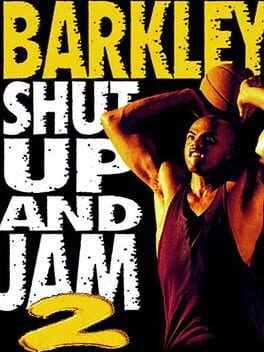Trivia Browser

subdirectory_arrow_right Dream: Land of Giants (Game)
▲
2
▼
 Banjo-Tooie's Terrydactyland contains a sub area, dubbed the Stomping Plains, which in turn is home to the Stomponadon, a seemingly theropod dinosaur so enormous in scale that only its foot is visible. It functions as the main obstacle of this area as, hence its name, it will try to stomp on Banjo & Kazooie as they attempt to traverse the plains. The concept behind Stomponadon had its origins from Banjo-Kazooie's earliest prototype game, Dream: Land of Giants; footage of Dream released by Rare for the first time in 2015 showed that Edson (who was replaced by Banjo in the final game) was to have encountered a similarly large dinosaur that would try to crush him with its feet.
Banjo-Tooie's Terrydactyland contains a sub area, dubbed the Stomping Plains, which in turn is home to the Stomponadon, a seemingly theropod dinosaur so enormous in scale that only its foot is visible. It functions as the main obstacle of this area as, hence its name, it will try to stomp on Banjo & Kazooie as they attempt to traverse the plains. The concept behind Stomponadon had its origins from Banjo-Kazooie's earliest prototype game, Dream: Land of Giants; footage of Dream released by Rare for the first time in 2015 showed that Edson (who was replaced by Banjo in the final game) was to have encountered a similarly large dinosaur that would try to crush him with its feet.
Rare Revealed: A Rare Look at Dream:
https://www.youtube.com/watch?v=w72kj20YNA0
Banjo Tooie - Stomponadon:
https://www.youtube.com/watch?v=coT2A2hzcrg
https://www.youtube.com/watch?v=w72kj20YNA0
Banjo Tooie - Stomponadon:
https://www.youtube.com/watch?v=coT2A2hzcrg

▲
1
▼
In the late 1990s, Interplay co-founder Brian Fargo began working on a second sequel to Battle Chess known as Battle Chess 3, but it was ultimately cancelled. The existence of the game would not be revealed until years later in 2015, when Fargo posted footage of the game's prototype for the first time.
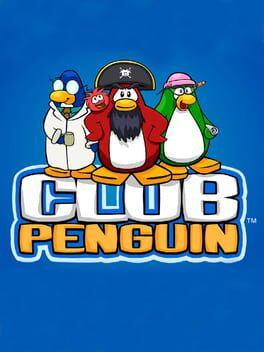
subdirectory_arrow_right Experimental Penguins (Game)
▲
1
▼
 The design of the penguins in Club Penguin were partially inspired by a panel from the American comic strip "The Far Side" that game designer Lance Priebe had clipped from a newspaper. The comic was originally published on June 8, 1994, and depicts a penguin after it slipped on a banana peel in the middle of the arctic plain. According to Priebe, the comic inspired him to use penguins, because he needed a simple character that he could animate for "an experimental project", that being the browser game Experimental Penguins, the earliest iteration of Club Penguin released in 2000.
The design of the penguins in Club Penguin were partially inspired by a panel from the American comic strip "The Far Side" that game designer Lance Priebe had clipped from a newspaper. The comic was originally published on June 8, 1994, and depicts a penguin after it slipped on a banana peel in the middle of the arctic plain. According to Priebe, the comic inspired him to use penguins, because he needed a simple character that he could animate for "an experimental project", that being the browser game Experimental Penguins, the earliest iteration of Club Penguin released in 2000.
Lance Priebe blog post:
https://rocketsnail.com/blog/2009/05/07/why-penguins
Chris Hendricks video:
https://www.youtube.com/watch?v=vO8HlVwaZw4#t=54s
Chris Gliddon article:
https://chrisgliddon.com/how-club-penguin-changed-my-life-b6d3f9a9625e
The Far Side comic publication date:
https://archive.org/details/1980-to-1994-complete-far-side/1994%20Far%20Side%20V02P15/page/n31/mode/2up
https://rocketsnail.com/blog/2009/05/07/why-penguins
Chris Hendricks video:
https://www.youtube.com/watch?v=vO8HlVwaZw4#t=54s
Chris Gliddon article:
https://chrisgliddon.com/how-club-penguin-changed-my-life-b6d3f9a9625e
The Far Side comic publication date:
https://archive.org/details/1980-to-1994-complete-far-side/1994%20Far%20Side%20V02P15/page/n31/mode/2up

▲
1
▼
 Within leaked source code for Pokémon Black and White uncovered by the Teraleak (a large-scale breach of internal server data from Game Freak in 2024) is an unreleased Nintendo DS remake of Yoshi, which according to the commit notes was intended to test multiboot functions for the two games. Various traits in the remake suggest that it was ported from a prior attempt at a Super Nintendo Entertainment System version instead of being made with the DS in mind: its name on the title screen is Super Yoshi no Tamago, while its copyright notice is listed as 1995 and credits Ape Inc., which had shut down in the same year. Furthermore, gameplay takes place exclusively on the bottom screen, and there are no touch control features present.
Within leaked source code for Pokémon Black and White uncovered by the Teraleak (a large-scale breach of internal server data from Game Freak in 2024) is an unreleased Nintendo DS remake of Yoshi, which according to the commit notes was intended to test multiboot functions for the two games. Various traits in the remake suggest that it was ported from a prior attempt at a Super Nintendo Entertainment System version instead of being made with the DS in mind: its name on the title screen is Super Yoshi no Tamago, while its copyright notice is listed as 1995 and credits Ape Inc., which had shut down in the same year. Furthermore, gameplay takes place exclusively on the bottom screen, and there are no touch control features present.The remake only has one stage, an underwater level. Mario uses Jill's voice lines from Drill Dozer while Yoshi retains his modern voice. The game is also riddled with bugs, featuring corrupted title screen graphics, a nonfunctional mode selection screen, and a glitch where the game may lock up if certain button combinations are pressed. Due to the Teraleak only containing fragments of the Pokémon Black & White source code, it is unknown if these bugs reflect the state that Super Yoshi no Tamago was in when it was abandoned.
The Cutting Room Floor articles:
https://tcrf.net/Development:Pok%C3%A9mon_Black_and_White/General_Oddities
https://tcrf.net/Super_Yoshi_no_Tamago
Gameplay footage of Super Yoshi no Tamago:
https://www.youtube.com/watch?v=uq9AtNhMuYY
https://tcrf.net/Development:Pok%C3%A9mon_Black_and_White/General_Oddities
https://tcrf.net/Super_Yoshi_no_Tamago
Gameplay footage of Super Yoshi no Tamago:
https://www.youtube.com/watch?v=uq9AtNhMuYY
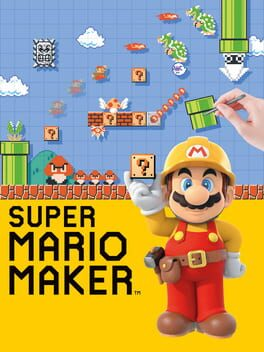
▲
1
▼
The game was originally announced at E3 2014 under the name "Mario Maker", with a demo and trailer featuring several differences from the final version of the game. These include a much different course editor HUD, different icons for the undo/reset buttons, and 8-bit text for the Play clapper. Other differences seen throughout the trailer include a vastly different look for the Super Mario Bros. theme, and slight alterations to the HUD of New Super Mario Bros. U.

▲
2
▼
During the development of Super Mario Bros., a 16x32 pixel square represented the player character. After asking to see sales figures from the head of Nintendo's Sales and Marketing Division, Takashi Tezuka and Shigeru Miyamoto decided to make Mario the game's protagonist due to the success of the Famicom port of Mario Bros.
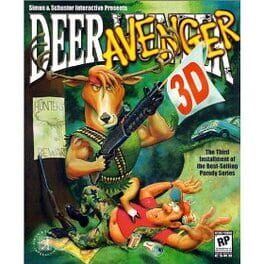
▲
2
▼
Deer Avenger 3D was planned to be ported to the Sega Dreamcast, but the port was cancelled without ever being announced or previewed by gaming press. The Dreamcast version's development did not become known until 2017, when a prototype disc was discovered in New Jersey at a garage sale held in the basement of a women's club that was raising funds for high school seniors' scholarships.
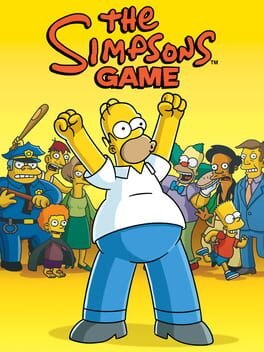
subdirectory_arrow_right The Simpsons Game (Game), The Simpsons Game (Game), The Simpsons Game (Game)
▲
3
▼
The E3 2007 build of the Xbox 360 release revealed that the home console versions were originally meant to have cutscenes fully animated in 3D. A workprint containing these cutscenes shows a mix of finished and unfinished 3D renders and storyboards with placeholder voice acting, with the final game having cutscenes primarily animated in the same 2D digital animation as the show. The Nintendo DS version of the game is the only version that exclusively uses 3D cutscenes.
This build also reveals that the identity of the "sleazy video game producer" featured in Level 5: Mob Rules is Larry Probst, the former CEO of Electronic Arts from 1991-2007 whose name was censored from the script in the final game.
This build also reveals that the identity of the "sleazy video game producer" featured in Level 5: Mob Rules is Larry Probst, the former CEO of Electronic Arts from 1991-2007 whose name was censored from the script in the final game.
The Simpsons Game - Xbox 360 version July 10, 2007 prototype cutscenes (Larry Probst reference at 9:50):
https://www.youtube.com/watch?v=w8P6LMd7gPE#t=590s
The Cutting Room Floor article:
https://tcrf.net/Proto:The_Simpsons_Game_(PlayStation_3,_Xbox_360)/July_10,_2007_(E3)/Early_Videos#Mob_Rules
The Simpsons Game - DS version playthrough:
https://www.youtube.com/watch?v=fY56cCPBygY
https://www.youtube.com/watch?v=w8P6LMd7gPE#t=590s
The Cutting Room Floor article:
https://tcrf.net/Proto:The_Simpsons_Game_(PlayStation_3,_Xbox_360)/July_10,_2007_(E3)/Early_Videos#Mob_Rules
The Simpsons Game - DS version playthrough:
https://www.youtube.com/watch?v=fY56cCPBygY
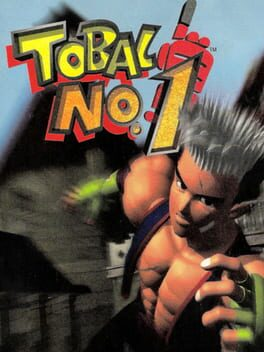
▲
2
▼
According to director Seiichi Ishii, the game was originally planned to feature a roster of characters from Chrono Trigger after he requested to work with that game's lead artist Akira Toriyama. Ishii wanted to work with him because around that time, Trunks from Toriyama's manga series "Dragon Ball Z" had recently been introduced, and he wanted a character like him in the game. As work on the game's prototype progressed, Toriyama was brought on and offered to design a full cast of new characters for the game instead of using Chrono Trigger characters.
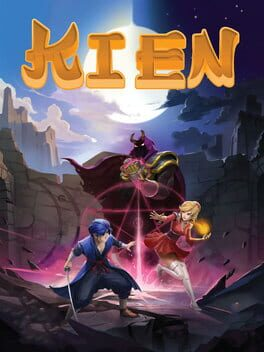
▲
2
▼
Kien was originally developed between 2002 and 2004 by AgeOfGames, a group of five Italian developers who had no prior experience making video games, aiming to be the first company in their country to develop a game for the Game Boy Advance. The game's release would end up being cancelled three separate times when multiple publishers picked up the game and then decided that releasing it would be too risky for sales. At the time, the game was completed and sent to gaming publications, with one known review appearing in the American magazine Nintendo Power in 2003. The game remained unreleased for over 20 years, but a prototype ROM of it did leak online at one point. Game designer Fabio Belsanti would be the only member of the game's original development team to remain at AgeOfGames, who had shifted to developing educational games to stay afloat. Eventually, with the rising popularity in retro games and lowered cost to produce GBA cartridges, AgeOfGames was able to release Kien in 2024 both digitally and on physical cartridges through retro game publisher Incube8 Games. The game's release garnered attention for it possibly having taken the record for the longest delayed video game release in history, surpassing Duke Nukem Forever and Beyond Good & Evil 2 by taking 22 years to release.
DidYouKnowGaming video:
https://www.youtube.com/watch?v=8RuAKtb2too#t=2128s
Assorted pre-release gameplay of Kien from the early 2000's on IGN's YouTube channel:
https://www.youtube.com/watch?v=ZPijGVE9G1U
https://www.youtube.com/watch?v=X-opVqCKlYA
https://www.youtube.com/watch?v=BfRViZPwHAM
Incube8 Games trailers:
https://www.youtube.com/watch?v=Ti1Ul0y6ZcQ
https://www.youtube.com/watch?v=AuuIAX-N2SQ
Nintendo Power Issue #173 (November 2003) (Page 154 in the magazine):
https://archive.org/details/nintendo-power-issue-173-november-2003/page/154/mode/2up
Destructoid article:
https://www.destructoid.com/thrice-canceled-gba-game-kien-is-finally-getting-released-22-years-after-completion/
Engadget article:
https://www.engadget.com/possibly-the-most-delayed-video-game-in-history-is-finally-available-on-the-game-boy-advance-205150837.html
RPGGamer article:
https://rpgamer.com/2024/06/game-boy-advance-title-kien-released/
The Guardian article:
https://www.theguardian.com/games/article/2024/jul/04/kein-the-most-delayed-video-game-in-history-released-after-22-years
https://www.youtube.com/watch?v=8RuAKtb2too#t=2128s
Assorted pre-release gameplay of Kien from the early 2000's on IGN's YouTube channel:
https://www.youtube.com/watch?v=ZPijGVE9G1U
https://www.youtube.com/watch?v=X-opVqCKlYA
https://www.youtube.com/watch?v=BfRViZPwHAM
Incube8 Games trailers:
https://www.youtube.com/watch?v=Ti1Ul0y6ZcQ
https://www.youtube.com/watch?v=AuuIAX-N2SQ
Nintendo Power Issue #173 (November 2003) (Page 154 in the magazine):
https://archive.org/details/nintendo-power-issue-173-november-2003/page/154/mode/2up
Destructoid article:
https://www.destructoid.com/thrice-canceled-gba-game-kien-is-finally-getting-released-22-years-after-completion/
Engadget article:
https://www.engadget.com/possibly-the-most-delayed-video-game-in-history-is-finally-available-on-the-game-boy-advance-205150837.html
RPGGamer article:
https://rpgamer.com/2024/06/game-boy-advance-title-kien-released/
The Guardian article:
https://www.theguardian.com/games/article/2024/jul/04/kein-the-most-delayed-video-game-in-history-released-after-22-years

▲
1
▼
Although it was only released in Japan, there were plans for an international version of Mario Party: Challenge World slated for release in Spring 2018. A demo for an English-translated version was shown off at the 2017 Attractions Expo for the International Association of Amusement Parks and Attractions (IAAPA) using the Japanese version's six-player roulette design. However, this release date came and went with no further announcements. On May 30, 2018, the game's manufacturer Raw Thrills accidentally uploaded and quickly delisted a video on their YouTube channel showing the international version's boot-up process (using a Windows OS) with the game's title screen fully translated into English, before crashing. In October, photos were leaked to the arcade news blog Arcade Heroes revealing that the international version was still being tested, but sported a heavily revamped cabinet design that ditched the roulette and redesigned the game for only three players. This was most likely due to its original design as a roulette gambling game keeping it from being sold to most American arcades. After more radio silence and it missing IAAPA's 2018 Expo, Raw Thrills confirmed to Arcade Heroes in April 2019 that the game was cancelled, and its few prototype cabinets were sold off to select luxury entertainment centers. One confirmed location housing it as of April 2019 was the Tulsa, Oklahoma branch of Cinergy Entertainment.
Mario Party: Challenge World - IAAPA 2017 demo:
https://www.youtube.com/watch?v=8b9Fk7GKYUA
Reuploaded Raw Thrills bootup crash video:
https://www.youtube.com/watch?v=TTee-1A5U28
Arcade Heroes articles:
https://arcadeheroes.com/2018/10/09/mario-party-challenge-spotted-on-test-almost-a-year-after-reveal/
https://arcadeheroes.com/2019/04/27/newsbytes-repro-star-wars-yoke-marble-carnival-cosmotrons-unboxing-exa-arcadia-mario-party-updates/
https://www.youtube.com/watch?v=8b9Fk7GKYUA
Reuploaded Raw Thrills bootup crash video:
https://www.youtube.com/watch?v=TTee-1A5U28
Arcade Heroes articles:
https://arcadeheroes.com/2018/10/09/mario-party-challenge-spotted-on-test-almost-a-year-after-reveal/
https://arcadeheroes.com/2019/04/27/newsbytes-repro-star-wars-yoke-marble-carnival-cosmotrons-unboxing-exa-arcadia-mario-party-updates/
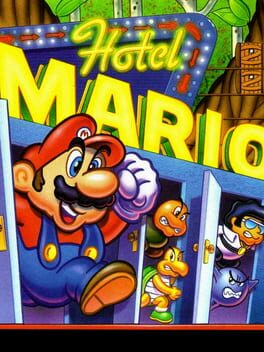
▲
1
▼
 In the prototype of Hotel Mario, walking Toads are used as Super Mushrooms and 1-Up collectables. The final game changes these Toad sprites to bouncing mushrooms, but the manual still refers to them as Toads.
In the prototype of Hotel Mario, walking Toads are used as Super Mushrooms and 1-Up collectables. The final game changes these Toad sprites to bouncing mushrooms, but the manual still refers to them as Toads.
The Cutting Room Floor article:
https://tcrf.net/Proto:Hotel_Mario#Super_Mushroom
Hotel Mario manual (page 14 in manual):
https://archive.org/details/HotelMarioUSAManual/page/n6/mode/1up
https://tcrf.net/Proto:Hotel_Mario#Super_Mushroom
Hotel Mario manual (page 14 in manual):
https://archive.org/details/HotelMarioUSAManual/page/n6/mode/1up
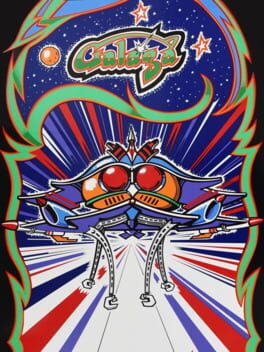
▲
2
▼
Galaga was originally conceived as a way to utilize Galaxian's PCB boards after they were overmanufactured, but while creating a partially-complete prototype, R&D engineer (and future Namco president) Shigeichi Ishimura decided that Galaga should use its own unique PCB hardware.
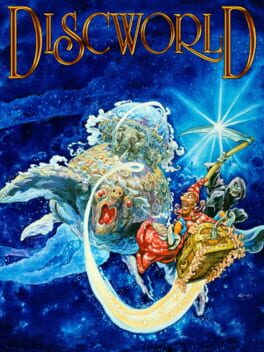
subdirectory_arrow_right The Orion Conspiracy (Game), Explosive Fighter Patton (Game), Llamatron: 2112 (Game), Slider (Game), Psychosis (Game)
This trivia has been marked as "Not Safe for Work".
It may not be appropriate for all visitors and definitely isn't appropriate for work or school environments.
Click here to unhide it.
It may not be appropriate for all visitors and definitely isn't appropriate for work or school environments.
Click here to unhide it.
▲
3
▼
Kotaku article searching for the first video game to say "fuck" (including Paranoia, The Orion Conspiracy and Discworld):
https://www.kotaku.com/the-search-for-the-first-video-game-to-say-f-1648611829
Explosive Fighter Patton swearing:
https://www.youtube.com/watch?v=fhN3stcB0is
Skweek controversy:
https://www.youtube.com/watch?v=n36EdEJLDCU?t=557
https://www.youtube.com/watch?v=OGSb2HRe_OE?t=80
Llamatron:
https://www.codetapper.com/amiga/random-rants/the-making-of-llamatron/
Discworld release date:
https://web.archive.org/web/20240210010559/https://colinsmythe.co.uk/terry-pratchett/discworld/convention-reports-index/terry-pratchett-chronology/
https://www.kotaku.com/the-search-for-the-first-video-game-to-say-f-1648611829
Explosive Fighter Patton swearing:
https://www.youtube.com/watch?v=fhN3stcB0is
Skweek controversy:
https://www.youtube.com/watch?v=n36EdEJLDCU?t=557
https://www.youtube.com/watch?v=OGSb2HRe_OE?t=80
Llamatron:
https://www.codetapper.com/amiga/random-rants/the-making-of-llamatron/
Discworld release date:
https://web.archive.org/web/20240210010559/https://colinsmythe.co.uk/terry-pratchett/discworld/convention-reports-index/terry-pratchett-chronology/
Company: Cyberdreams
▲
1
▼
"Reverence" was one of the last announced projects by Cyberdreams, but never made it past the Alpha phase before the company's closure. The game saw the player being chosen by the gods themselves to help determine the future of the human race, whom the gods believed to have grown too apathetic and unjust to live. It was intended to be a first-person shooter game, with the player wielding a variety of guns and spells as they traveled through four different realms to decide the fate of humanity. Each realm was modelled after a real life mythological god, those being Osiris (Egyptian god of the underworld), Kokyangwuti (Hopi goddess of life), Freyja (Norse goddess of love), and Manjursi (Tibetan god of wisdom). While the game itself was cancelled, a playable prototype was leaked in 2015.

▲
1
▼
In August 2015, location tests for DanceDanceRevolution (2014) were held in North America. This marked both the first time the series was location tested in North America since Dance Dance Revolution X2 and the first time eAMUSEMENT was officially supported in the region. The English translation was a more completed version of the one present in the Korean version. Furthermore, 47 songs were removed from this version due to copyright restrictions, mostly being licensed songs from previous entries and all the "U.M.UXBEMANI" songs.
In the end, DanceDanceRevolution (2014) was not released in North America, with the following game Dance Dance Revolution A becoming the first Arcade release in North America since Dance Dance Revolution X2.
In the end, DanceDanceRevolution (2014) was not released in North America, with the following game Dance Dance Revolution A becoming the first Arcade release in North America since Dance Dance Revolution X2.
Article from RemyWiki:
https://remywiki.com/AC_DDR_2014
NeoGaf discussion on the location test:
https://www.neogaf.com/threads/ddr-2015-arcade-location-test-of-newest-dance-dance-revolution-at-round1-phm-july.1070864/
Gameplay of location test:
https://www.youtube.com/watch?v=taq8Yeiep3c
https://remywiki.com/AC_DDR_2014
NeoGaf discussion on the location test:
https://www.neogaf.com/threads/ddr-2015-arcade-location-test-of-newest-dance-dance-revolution-at-round1-phm-july.1070864/
Gameplay of location test:
https://www.youtube.com/watch?v=taq8Yeiep3c
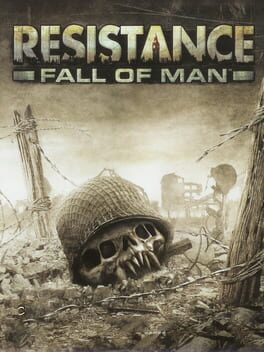
subdirectory_arrow_right Resistance (Franchise)
▲
1
▼
During the 2006 Game Developers Conference (GDC) where Sony Computer Entertainment showcased a new demo for Resistance, the game previously known as "I-8". The demo showed the game in a much more complete form than the simple FPS that was shown at E3 2005. The gameplay was shown with new weapons very much like the Ratchet & Clank series, only now with a more realistic slant. The demo also showed off effects such as smoke trails on grenades, tactical troop movements, and enemies that came from the ceilings as the lead character ran down a devastated corridor.
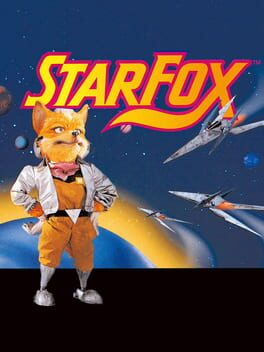
subdirectory_arrow_right Starglider (Collection)
▲
2
▼
Argonaut Software's Starglider games released in the 1980s, which were first-person combat flight simulators rendered with wireframe vector graphics, inspired them to come up with a prototype that would eventually lead to the creation of the first Star Fox. They created a prototype for the Nintendo Entertainment System codenamed as "NESGlider" that was based on the original game, utilizing a similar method to accelerate graphics to how the Super FX chip for the Super Nintendo Entertainment System later would. When they showed this prototype to Nintendo in 1990, they were instead advised to port and develop the game for the then-upcoming SNES. After Argonauts did that, Nintendo declared that this was the best 3D graphics the console could produce and that they hadn't designed the SNES with 3D games in mind. Argonaut staff suggested that if they wanted better, then they should let them design a 3D chip for them, and thus the Super FX chip was born.
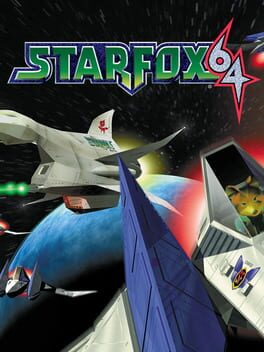
▲
3
▼
Star Fox 64's development didn't actually begin with the intention of creating a new Star Fox game; rather, it began with a series of experiments by character designer Takaya Imamura and programmer Kazuaki Morita. As Morita was new to 3D programming, creating something entirely new was difficult, and to make matters worse, they didn't have the final N64 hardware itself to work with, instead having to utilize a bulky dev computer and a modified SNES controller without analog sticks, as those were all being used by the Super Mario 64 development team, which were clearly given far more priority. The pair decided to begin development by porting the original Star Fox, which they thought would be better for easing into 3D. As this was Morita's first attempt at learning 3D, he began with inputting his own data and placing objects like cubes on a course, and then launched basic-looking Arwings. This prototype was affectionately named "Star Box".
It's worth pointing out that Star Fox 64's development wasn't given the full greenlit until the project was displayed at Space World 1995, as the higher ups within Nintendo were not actually keen on the concept and were even waiting for Imamura and Morita to eventually give up on their experiments. It was because of their dedication and perseverance to get the game off the ground that led to Star Fox 64 beginning full production as an actual video game after it was shown off at Space World, with Shigeru Miyamoto and other Nintendo staff such as director Takao Shimizu slowly coming on board afterwards.
It's worth pointing out that Star Fox 64's development wasn't given the full greenlit until the project was displayed at Space World 1995, as the higher ups within Nintendo were not actually keen on the concept and were even waiting for Imamura and Morita to eventually give up on their experiments. It was because of their dedication and perseverance to get the game off the ground that led to Star Fox 64 beginning full production as an actual video game after it was shown off at Space World, with Shigeru Miyamoto and other Nintendo staff such as director Takao Shimizu slowly coming on board afterwards.
User's translation of Star Fox 64 developer interview from official Japanese guidebook:
https://www.reddit.com/r/starfox/comments/x938ib/behold_an_attempt_at_translating_an_interview/
Nintendo Dream Star Fox Adventures interview:
https://shmuplations.com/starfoxadventures/
General SF64 development timeline overview:
https://tcrf.net/Prerelease:Star_Fox_64
https://www.reddit.com/r/starfox/comments/x938ib/behold_an_attempt_at_translating_an_interview/
Nintendo Dream Star Fox Adventures interview:
https://shmuplations.com/starfoxadventures/
General SF64 development timeline overview:
https://tcrf.net/Prerelease:Star_Fox_64

